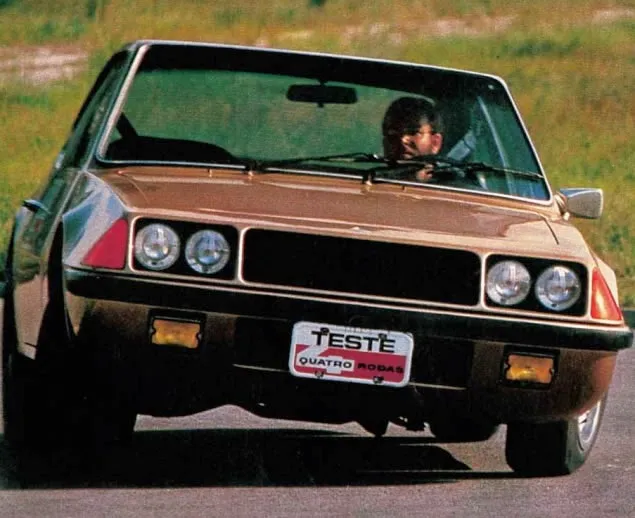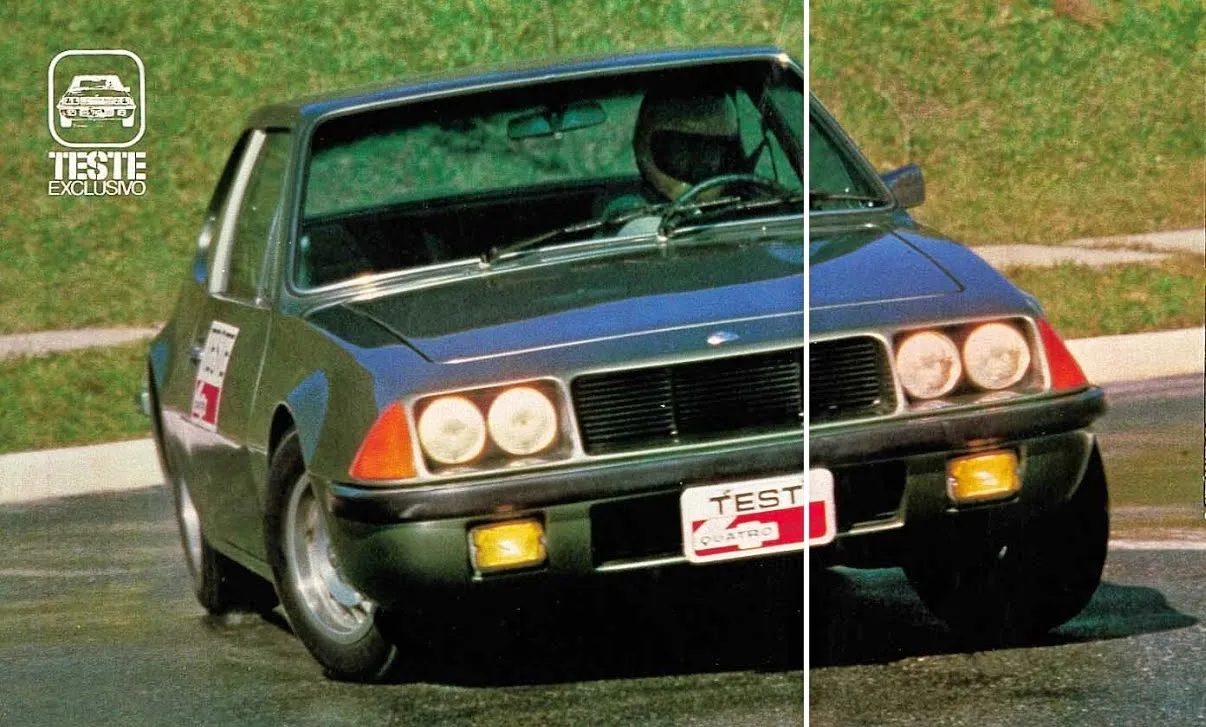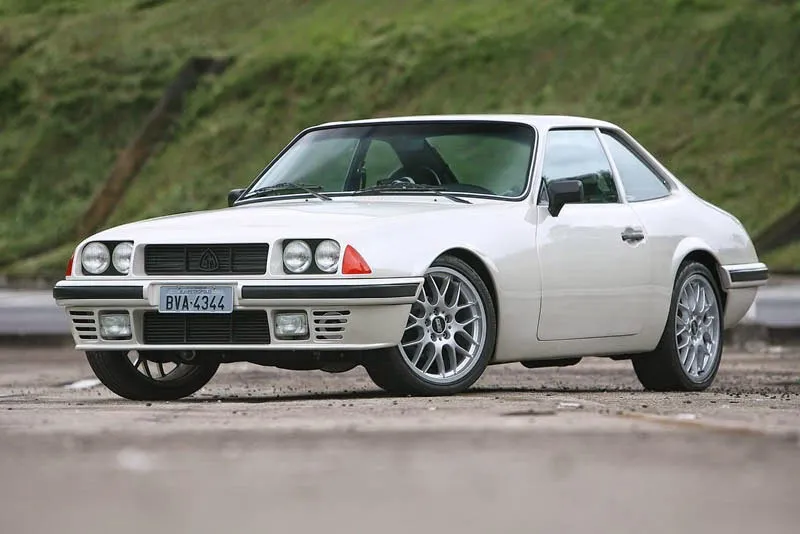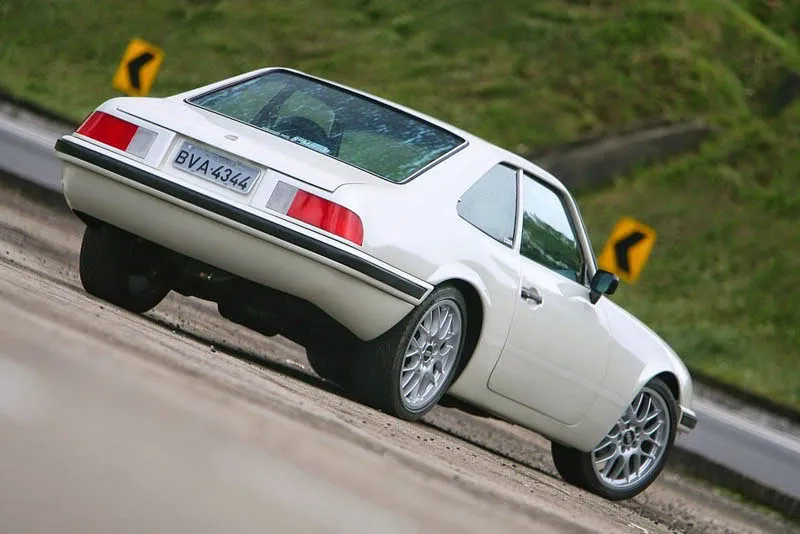In the 1970s and 1980s, Brazil was going through a transitional period in the automobile market. After the closure of doors to imported cars in 1975, several national automakers began to gain prominence, and some of them brought exclusive models to the country that attracted attention for their beauty and originality. Among these vehicles, one name has remained etched in the memory of Brazilian classic car lovers: the Saint Matilda SM.
The Birth of a National Legend

Released in 1978, the Saint Matilda SM emerged as yet another national outlier which quickly won the sympathy of the Brazilian public. With a bold and innovative look, the model stood out in the country's automotive scene for its beauty It is exclusivity. The Santa Matilde brand was run by Humberto Pimental, who, with the help of his daughter Ana Lídia, designed a car with charming curves and a striking style, which made it one of the most desired models of the time.
The SM's design was unmistakable: long hood and short rear, with a fluid and elegant line. The two big doors and the four front headlights were features that caught attention, creating a unique personality for the model. Another notable detail was the use of fiberglass body, a material that was also adopted by other national sports cars of the time, such as Puma and the Miura. To the triangular turn signals were another striking detail of the coupé, which became a signature of the Santa Matilde SM design.
With 4.25 meters long it is a 2.42 meter wheelbase, the SM was compact and well proportioned. Its height of 1.28 meters gave the car an elegant and sporty appearance. Although the initial model had a more basic style, this look ended up being maintained throughout the SM's production, with some evolutions over the years.
Performance and Technical Characteristics

O Saint Matilda SM was powered by an engine 4.1 inline six-cylinder, coming from Chevrolet Opala, one of the most iconic cars in Brazil at the time. This engine, with rear-wheel drive and independent front suspension, was one of the model's main attractions. The SM's performance was impressive for the time, offering acceleration of 0 to 100 km/h in 12 seconds, while the version with automatic transmission made the same journey in 14 seconds. The maximum speed reached was 180 km/h, an impressive number for a national sports car.
In addition to the engine power, the SM had a luxurious interior, with benches and coverings in leather, power steering, air conditioning It is electric window control, besides a full panel, with tachometer and oil pressure gauge. The laminated and gradient windshield and the internal trunk lid opening were other details that demonstrated the car's level of sophistication.
The SM's rear suspension was equipped with a rigid shaft, a common feature in cars of the time, and the model maintained the 14 inch wheels until the early 80s, when it began to adopt wheels 15 inches. The larger wheels helped improve the model's stability and performance. In addition, the SM was one of the first Brazilian cars to feature four-wheel disc brakes, a significant advance in terms of security.
The Growth and Evolution of the Model

From 1980, O Saint Matilda SM began to gain new versions and improvements, remaining relevant in the market. The 4.1 six-cylinder engine continued to be available, but the model also began to offer more basic versions, with 2.5 gasoline and 2.5 alcohol engines, both with turbocharger. These more affordable versions helped expand the SM's audience, keeping the model as a luxury and performance option for different types of consumers.
The model of 1980 also began to have the option of automatic transmission in the 4.1 engine, an addition that pleased drivers looking for more comfort and practicality. In addition, the SM maintained its sporty performance, with 129 hp of power and torque of 29 kgfm, which ensured good acceleration and a pleasant drive. The automatic version, in turn, maintained the same performance characteristics, although with a slight reduction in acceleration.
Already in 1981, the SM now has bigger wheels and with a new system of four-wheel disc brakes, which further improved its drivability and safety. From 1984, the model gained a new look, with wider front and rear bumpers, in addition to more engaging sides is restyled rear. These changes made the SM even more attractive and modern, reinforcing its image as a luxury sports car.
Alcohol and SM: An Unbeatable Combination

With the rise of the use of alcohol as fuel in Brazil, the Saint Matilda SM has also adapted to market changes, offering versions with 4.1 alcohol engine, similar to what was already used in A10 pickup truck. These versions became especially popular during a period of gasoline shortages and increased use of ethanol in Brazil.
Another important innovation was the introduction of progressive power steering, provided by ZF, a German supplier of steering systems. This system made steering firmer as speed increased, providing more stability and comfort for the driver. This feature was a major differentiator for the SM, which became the most expensive car sold in Brazil at the time, even surpassing imported luxury models, such as the Alfa Romeo 2300.
In 1984, SM also got the version convertible, which offered the option of hardtop or canvas roof, a feature that made the model even more exclusive and desired by Brazilians. This convertible version had a high price, costing double of a Diplomat Opal 6-cylinder engine, which further consolidated the Santa Matilde SM as a car of high luxury It is prestige.
The End of Production and Legacy
The production of Saint Matilda SM was closed in 1988, but to this day the model is remembered as one of the greatest examples of national sports cars, which were successful both in Brazil and abroad. However, the number of units produced was never officially disclosed, which creates a certain aura of mystery around the model.
Although the Saint Matilda SM has not achieved the same popularity as other national sports, such as Puma or the Miura, he left an indelible mark on the history of Brazilian motorsports. The combination of innovative design, impressive performance It is Lux made the SM one of the most admired cars of its time, attracting attention wherever it went.
The model was more than just a car: it was a symbol of an era in which Brazilian cars gained strength, with innovative projects made with great care and dedication. The Saint Matilda SM became a piece of collection for many, with a legacy that is still revered today by national motorsport enthusiasts.
Conclusion: The Car that Marked an Era

O Saint Matilda SM It was a milestone in Brazilian automotive history, an example of how national creativity and talent could create cars of Lux, performance It is style. Although its production was short, the SM remains alive in the memories of those who had the opportunity to see it on the streets or to drive one of the rare examples that survived the passage of time. If you have the chance to see one Saint Matilda SM Today, don't miss the opportunity to admire this up close masterpiece of Brazilian design and engineering, which marked a generation and remains an icon of our automotive industry.
Of course, the Saint Matilda SM will continue to be remembered as one of the greatest examples of cars outstanding of Brazil, a true treasure that represents the originality, O Lux and performance of national sports.









